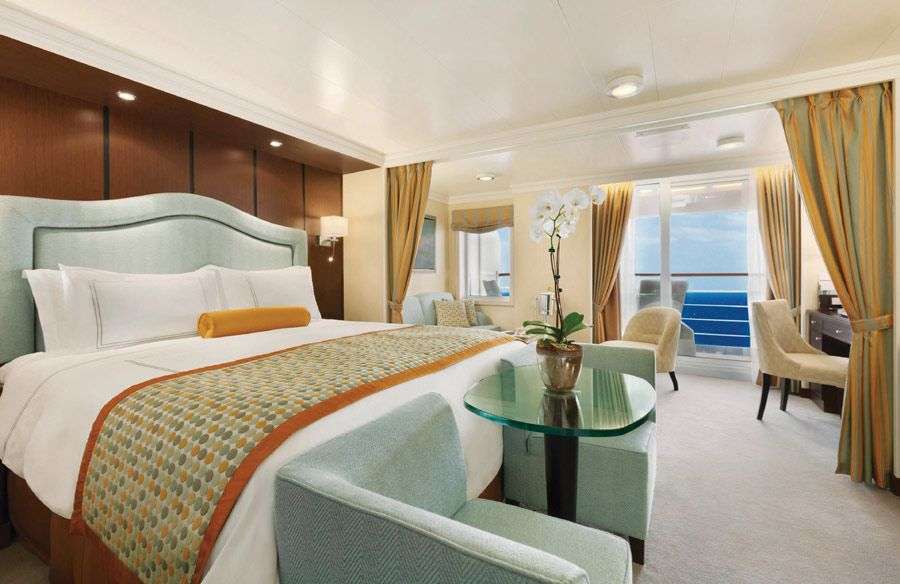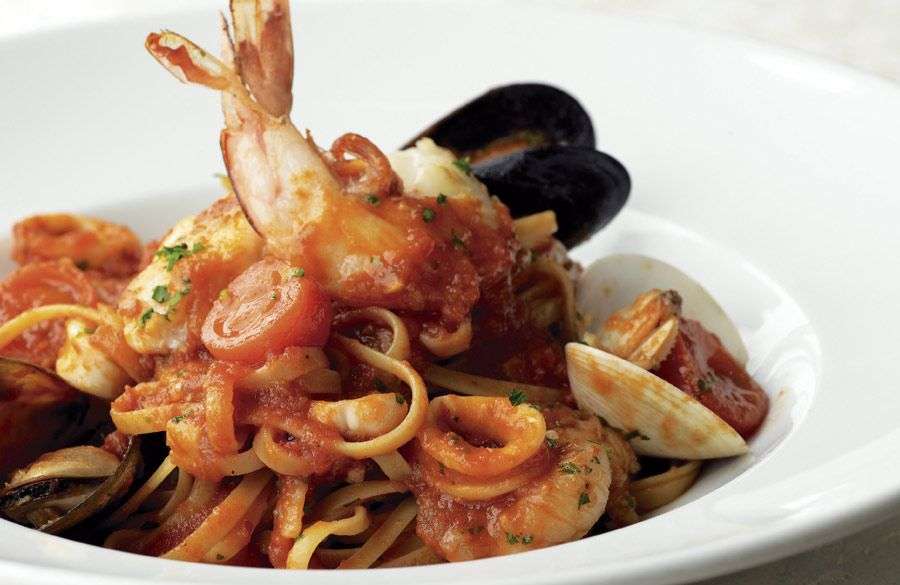Barely a year ago, Frank del Río returned to Havana, which he had left on August 22, 1961 and which he had never again visited. The seven-year-old boy’s memory had recorded many things and they started leaping up, one after the other, when touching Havana soil.
The hospital where he had been born and which he had revisited sometimes when sick, his Lawton home on 957 San Francisco, between 19 and 20 streets, an address he knows by heart. The Náutico Club, Guanabo beach, Jalisco Park, the Malecón seaside drive and its car races, his first school…. It’s hard to believe that he could have kept so many memories for more than 50 years, but the details and his eyes when speaking of them leaves no room for doubt.
He has already come back three times since he traveled to Cuba in 2015: “Cuba hasn’t developed as it should have for several reasons, among them the blockade, therefore so many things were the same as I had left them, and others were in a bad state. I looked at everything, to see which buildings could be rescued, what can be returned to its glory. Havana continues having a special charm.”
His parents spoke a lot to him about Cuba. His father worked as an accountant for Coca-Cola and his mother was a secretary in a laundry business on the Manzana de Gómez, but they never again visited Havana. “I’m apolitical, it wasn’t because of that…what happened, happened, and one should let it go. My father, who passed away in May 2016, always wanted to go but the truth is I don’t actually know why we never returned.”
Frank del Río arrived in the United States and went to live in Connecticut with his parents and when he was 16 they decided to move to Miami. On the first day of high school he sat beside a girl, it seemed as if that empty seat has been set aside for him by fate, because he’s still at her side: they’ve been together for 40 years; she is his wife and the mother of his two children.
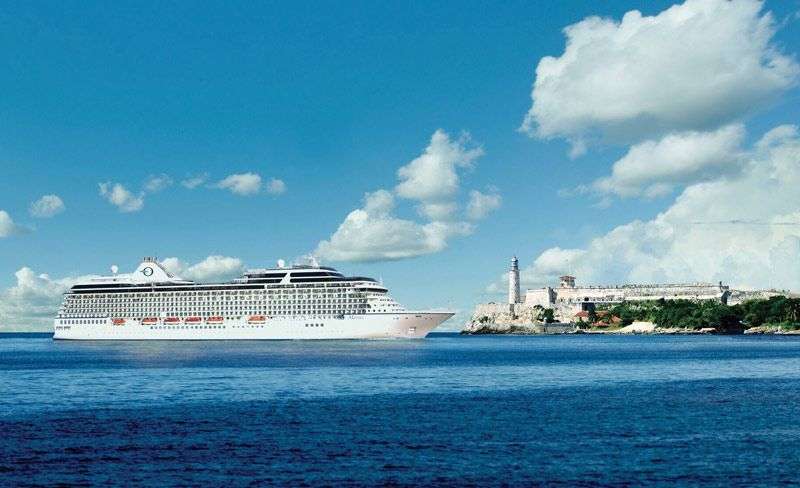
How is it that a Cuban who arrived in the United States at the age of seven has become the CEO (president and executive director) of one of the world’s most famous cruise companies?
With a bit of effort and a lot of luck…. The years I spent in Connecticut gave me the spirit to work hard. At that time there was a great deal of discrimination, I was the only one who spoke Spanish, it was very strange for them. I had a lot of fights with other boys because they bullied me for being a Latino. I learned; each experience is useful. I was always competitive, I demonstrated it during my time as an athlete, I got to be the sixth fastest runner of the half mile in the United States, I’ve always been competitive, I’ve always worked hard, I’m not the best in anything, but I compete. My parents used to tell me…“you’re not better than others and others aren’t better than you.”
I graduated as a public accountant, like my father. I worked in a Fort Lauderdale cruise company that went bankrupt. It’s when those negative things happen that you really learn. That affected me greatly, I spent almost two years out of work, luckily my wife had a job, if not we would have starved to death. I had the opportunity through the French government and French banks that had financed some of that company’s ships to start a cruise company with three small ships. I didn’t have a cent to my name, I mortgaged the house, I used everything I owned on the business and I sought investors and we started Oceania Cruises in January 2003. Three months later the U.S. invasion of Iraq took place, the economy dropped, but we took the risk and competed with other big companies that had many ships. With Carnival that had 100 ships, with Royal that had 50, with Norwegian that had 15…and I with one, but the following year I had two, and on the other three…and that’s how we started growing.
In 2007 a very large company from New York (Apollo Management) found out about us, they wanted to enter the cruise business and they bought 58{bb302c39ef77509544c7d3ea992cb94710211e0fa5985a4a3940706d9b0380de} of the company for 850 million dollars. At present they are principal shareholders of the company, although my group and I kept part of the shares. In 2008 we bought Regent Seven Seas, the world’s most luxurious ship company. We created the holding Prestige Cruises and managed Oceania and Regent for six years. In 2014, we sold Prestige to Norwegian for 3.3 billion dollars. I had turned 60, I thought I was going to retire because Norwegian had its CEO, but it was only for three weeks. The chairman of Norwegian’s Board asked me to be the CEO of the three companies, I asked him to give two hours to convince Marcia, my wife. I love this job, so I returned. Also for my team and for the person who asked me, who was the same one who in 2007 changed my life.
I remember that moment nine years ago when the purchase of the shares of Oceania Cruises went through. At that time my daughter, who had married, lived with us because we didn’t have money to have another house. Everybody was saving to get a small house for her. My two sons worked with us. When they gave us that check, our life completely changed. That night, my children went out to celebrate, my wife and I ordered a pizza and we celebrated in bed with my 15-month-old grandson Dominique, watching TV.
At the close of 2016 Norwegian signed an agreement to travel to Cuba, in what does this consist? How will the operation be?
We’re very happy because the Cuban government approved our three brands; it’s the only company that has all its brands approved. The agreement is until May 31, 2017, we are waiting for the new authorization that, according to what I was told, should be given by the end of January.
We started in March with the first three trips of Oceania; I was very happy that it was with this brand because it was the one I founded. We’re going to arrive with the Marina (1,250 passengers), the first we had built for us. In March we will have three Oceania trips that will call in Havana with a two-day and one-night overnight, or sea, stay in the port of Havana.
In April we will have two Regent Seven Seas Mariner cruises (700 passenger ultra-luxury), and in May we will start with five Norwegian Sky cruises, each one for four days. They leave from Miami on a Monday, on Tuesday and Wednesday they will be in Havana, on Thursday on Norwegian’s private island in the Bahamas and on Friday morning they return to Havana.
We have presented a very wide-ranging proposal to Cuba to continue with the Norwegian Sky cruises the rest of the year, each week; Oceania with small ships and with others to go around Cuba. We want Havana for two nights, Cienfuegos, Santiago de Cuba and another in Cuba’s northeastern coast. And many other cruises, for example, when they go from Miami to Los Angeles, instead of going to Key West or Cozumel, that they make a stop in Havana. We proposed some 86 ships from January 1, 2017 to May 31, 2018.
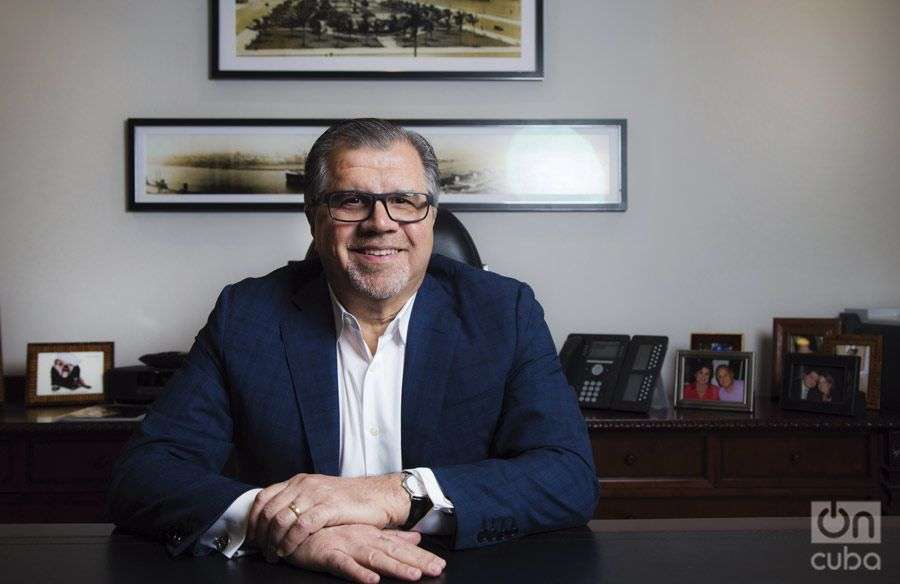
This company calls in the principal cities of the world, Norwegian has 510 destinations, what does it represent to incorporate Cuba’s cities?
It represents an opportunity to diversify the itineraries. The Caribbean represents 45{bb302c39ef77509544c7d3ea992cb94710211e0fa5985a4a3940706d9b0380de} of all Norwegian cruises, a similar number for Carnival and the same number for Royal; because the Caribbean is a nearby destination which can be visited the entire year. Thus, having such a dynamic destination as Cuba…just imagine, the majority of the places in the Caribbean have a single place to visit, Cuba is much more. Havana deserves three days, including Pinar del Río and Varadero. You have Trinidad, Cienfuegos, Santiago, the cays. Cuba is an amazing country, with nine declared World Heritage Sites by UNESCO. It has mountains, valleys, rivers, lakes, big cities, French, African, Spanish, Russian culture…all that has to be enjoyed and developed. It is a great opportunity; even if I were Polish instead of Cuban…I would continue thinking it’s a great opportunity, the place to develop for the cruise industry. Cuba is perfect…only 200 miles from Miami, 200 miles from Fort Lauderdale, 300 miles from Tampa…it is a long and narrow island, perfect for cruises.
What impact could Cuba’s opening to this industry have for the rest of the Caribbean?
The majority of the itineraries that leave from Miami, from Fort Lauderdale and from Tampa, which go to the Caribbean, have to sail the first day in the high seas, have to make an overnight stay in some place, that’s why I believe that instead of being detrimental it will help the rest of the Caribbean. Because they will be in Havana the first day, without sailing too much. Before the distance was greater, to reach Haiti or Mexico. I don’t believe it will be detrimental for the rest of the Caribbean, on the contrary, the cruises to the Caribbean will be greatly enriched with Cuba’s incorporation, and the ships will continue calling in the rest of the ports.
Norwegian’s tourism is high standard, is Cuba prepared for this?
Havana is not as developed as it could be, or how it will be in the future, but neither is it as backward as some could think. We go to 510 destinations around the world, Cuba is not the 511th in terms of quality or infrastructure or attractions; I would say that Cuba is at least in the first 20{bb302c39ef77509544c7d3ea992cb94710211e0fa5985a4a3940706d9b0380de}.
Right now there are three cruise terminals in the bay of Havana, two are in a bad state, we want to help to rebuild them, we are requesting a special license from OFAC to be able to do so and the Cuban government wants to work with us in this sense. Only one is working now, the Sierra Maestra terminal, in which only two ships can dock and the capacity is not sufficient. Plus the fact that the Havana Tunnel was built in the 1950s, so it doesn’t have sufficient depth for large-size ships and this generates a limitation for the 2,000 passenger ships; today they can be of 4,000 or 5,000 passengers. Resolving the problem of the Havana Tunnel to make it deeper can take years and a lot of money, that’s why it is important that the other two terminals can function, because, even if they are ships with a smaller capacity, there could be more at the same time, a total of six if the three terminals would be functioning. In addition, the U.S. people are greatly interested in visiting Cuba, and perhaps it is not as convenient as other ports, but neither is it among the worst and I’m sure it will be a very positive experience for them. The ones I have seen in Havana have always looked fascinated.
Cruise tourism implies a great amount of persons at the same time in the same place, how does Norwegian manage these operations for a real cultural exchange to take place and at the same protect the place being visited?
Our clients are generally elderly, educated people interested in culture, in getting to know the place. We will do the same thing in Havana as we do when our ships get to Florence, Rome, Venice, Saint Petersburg, Istanbul, Shanghai. Our clients are more interested in having a cultural exchange than in enjoying the beaches, for example. The museums, the streets, Old Havana, the new UNESCO sites, I believe Cuba is well-prepared to impress these tourists, who are not just about sun and beach or daiquiris. Cuba is the pearl of the Antilles and has a great deal of cultural aspects to offer. Just in Havana we are going to have 17 tours, we don’t want to take 2,000 persons to the same place because then the quality of that experience won’t be good. Cuba has a formidable history to show, it has a particular charm.
For Norwegian it is very important to place travelers in contact with the culture of the place they visit, and I know they put special emphasis on gastronomy, how will this be with Cuba?
Especially with Oceania and Regent, one of the most important parts of the cruise is gastronomy. We have kitchens especially to teach guests how to cook and for them it is part of the wealth of the cruise.
One of the things we want, so clients can better experience Cuban culture, is that when the ship is in Cuba the chefs be Cuban; that during the overnight stay Cuban chefs cook Cuban food. That Cuban music is played, that the permanent crew be Cuban: doctors, bartenders, salesclerks…that increases the mutual benefit because it generates job posts in Cuba and for the clients their experience with Cuban culture increases, the trip is enriched.
Nowadays the majority of the crews are Filipino, or from countries in Eastern Europe, the musicians are Rumanian…I don’t know why, but it’s like that. That’s why we have asked for permission to be able to achieve this.
What will this experience leave for the Cubans and the U.S. people?
I believe the Cubans will be happy. The Cuban people have nothing against the U.S. people, and vice versa. From what I have seen, I have asked hundreds of people from the U.S. and they are very enthusiastic about visiting Cuba. I believe it will be something positive for commerce, for the economy, and for the U.S. people it is a very attractive place and they will be very respectful clients.
Our ships go to Russia, China, Vietnam, Saudi Arabia…to places where there are more conflicts between both governments and they are successful trips.
What has been your experience in terms of business with Cuba?
It hasn’t been complicated, it perhaps has taken a bit longer than what we are used to in the United States, but I find that the officials with whom I have met have been intelligent, well-educated, professional. Cuba has some bureaucracy that has to be respected; I suppose with time that will start adapting.
The agreements with Cuba were signed a few days after the electoral victory of Donald Trump and many fear that the recently elected U.S. president will revert the agreements signed between the government of Barack Obama and Havana. Therefore, why sign with such a high risk? What do you expect will happen?
You can’t say no to the opportunity. If I had been allowed to enter a single time, I would have taken advantage of it. What Trump will do is not known, but he hasn’t gotten to where he is by being stupid, he isn’t stupid. He’s a billionaire, successful in business, he has gotten to be president of the United States, and I believe his ideology is making business deals. And Cuba wants to do business, the Cuban government doesn’t want the United States to get involved in its domestic policy, it wants to do business. What is missing is that the embargo be lifted to do business, and I believe there’s a great opportunity, in my opinion, for 2018. In 2017 other more domestic things will be at the top of his agenda, but in 2018 he will still have a Republican Congress, in Cuba there will surely be more changes; Raúl Castro ends his mandate and one of the Helms-Burton Act’s requisites is precisely that there be no Castros in power in Cuba. Thus I think that that in 2018 something positive could happen…and that’s what I expect.
From five years onwards….
It depends on the infrastructure. The U.S. demand is much greater than the capacity Cuba has right now. Any day here in Miami there are up to seven or eight ships, if possible; those seven or eight ships are in Cuba the following day, but it depends on the port infrastructure…only that. Cuba has the highways, the buses, the drivers, the guides, the nine UNESCO sites, what’s missing is a place to park the ships. We are also thinking about being able to anchor, there are many places that do it, I would say that out of 30 or 40{bb302c39ef77509544c7d3ea992cb94710211e0fa5985a4a3940706d9b0380de} of the places where we go ships are anchored, there are no ports, no terminals; the Cuban government is considering that alternative.
Norwegian Cruise Line Holdings Ltd. Is one of the world’s largest cruise companies, it manages the Norwegian Cruise Line, Oceania Cruises and Regent Seven Seas Cruises brands. With several office buildings, thousands of employees, its ships visit 510 ports worldwide. One man heads all that and in his office in Miami you are welcomed by two photos of Havana and some works of art by Cuban artists. For Frank del Río the United States represents “greatness.” And Cuba? I ask him. “Cuba is my home.”
“I like to collect Cuban visual works of art. Wifredo Lam, Amelia Peláez, Víctor Manuel, Carlos Enríquez, Abela, Cundo Bermúdez.”
“My family is Cuban, my wife, my children are married to Cubans…if you ask my grandchildren what they are…they’ll say: Cuban.”
“My wife and I decorate the ships; we like to choose the rugs, the furniture, the decorations. I personally choose each work of art for each one of the ships.”
“When I’m not working I like to…read magazines, newspapers, I enjoy being around my four grandchildren.”
“I love Cuban food, if it were for me I would eat it every day.”
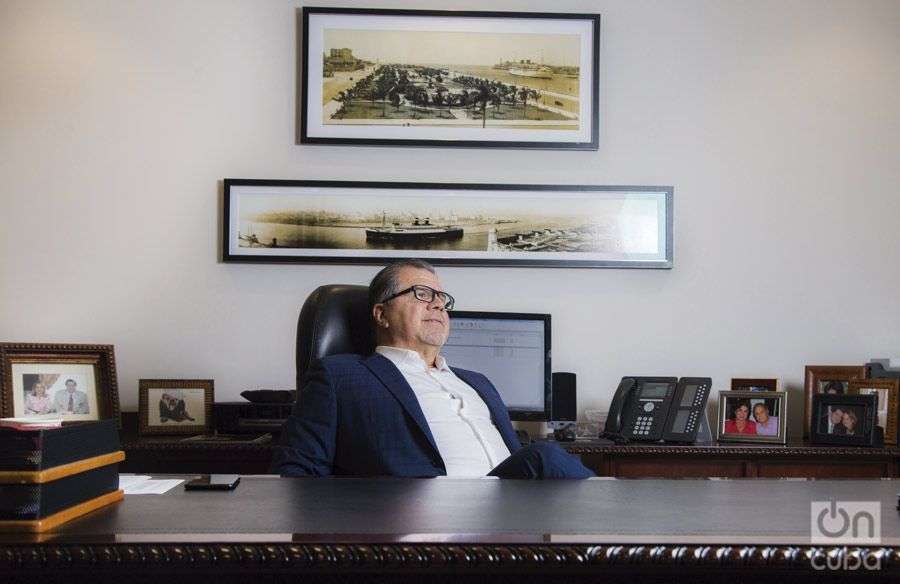
Nine Cuban UNESCO World Heritage Sites
Old Havana and its system of fortifications, in Havana
Trinidad and the Valle de los Ingenios, in Sancti Spíritus
San Pedro de la Roca Castle, in Santiago de Cuba
Desembarco del Granma National Park
Viñales Valley, in Pinar del Río
Archaeological landscape of the first coffee plantations, in Santiago de Cuba and Guantánamo
Alejandro de Humboldt National Park, in Guantánamo and Holguín
Urban Historic Center of Cienfuegos
Historic Center of Camagüey









